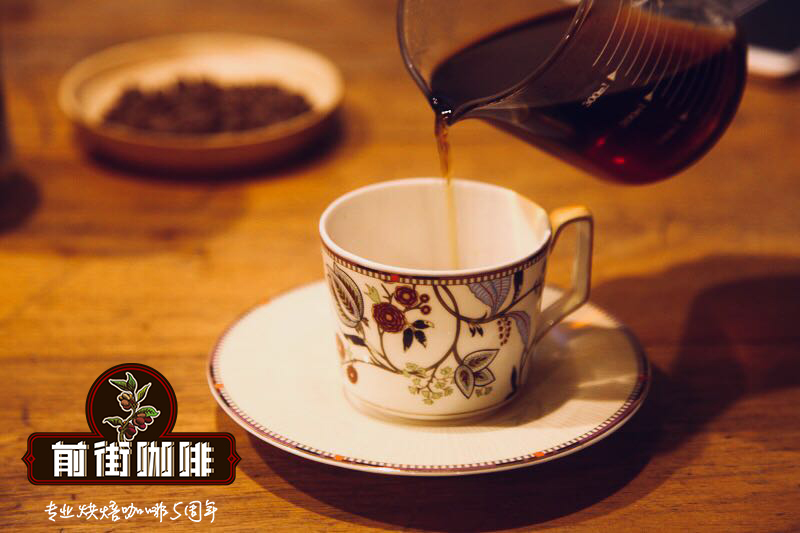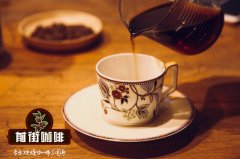What are the varieties of Brazilian coffee beans? what are the characteristics of semi-washing method? why is it called half-sun method?

Professional coffee knowledge exchange more coffee bean information please follow the coffee workshop (Wechat official account cafe_style)
Brief introduction of Qianjie-Brazilian Coffee Variety and semi-washing treatment
There is a wide variety of Brazilian coffee, the vast majority of which are unwashed and sun-dried, classified according to the name of the state of origin and the port of transport. Brazil has 21 states and 17 states produce coffee, but four of them produce the largest, accounting for 98% of the country's total output. The taste of Brazilian coffee has a low sour taste, with the sweet and bitter taste of coffee, the entrance is very smooth, but also with a hint of grass aroma, slightly bitter in the fragrance, smooth and smooth, with a pleasant aftertaste.
Although coffee is diverse, Brazilian coffee is suitable for the taste of the public. It is a low-acidity, moderately roasted coffee bean from the World Coffee Center.
Brazil is vividly compared to the "giant" and "monarch" of the coffee world. There are about 3.97 billion coffee trees there, and small farmers now grow 75% of Brazil's total coffee production. The number of coffee producers in Brazil is twice or even three times that of Colombia, the second largest coffee producer in the world.
Kaduai, Kaddura, New World and bourbon are the four main varieties of coffee in Brazil.
What is half-sun (Pulped Natural) coffee?
Let's start with the most basic definition. The concept of half-sun (Pulped Natural) originated in Brazil 20 years ago and was originally called "shelled cherry coffee". It is so called because the coffee fruit is peeled before it is dried, but all the pulp pectin must be retained.
This process is between sun treatment and water washing treatment. In the sun treatment, the coffee fruit should be completely dried in the sun, while the washing treatment should completely remove the peel, pulp and pectin coating of the coffee bean before drying.
Coffee in processing photo by CeCafe
Honey treatment (especially red honey), semi-washing (semi-washed), semi-drying (semi-dried) and other treatments are often considered to have evolved from Pulped Natural. Part of the reason is that these treatments use a peeling machine to remove the peel and flesh of the coffee fruit before drying.
The difference is that the proportion of pulp or pectin is retained after peeling machine treatment. The most important thing about Pulped Natural is to remove only the peel.
Knowledge: the more colloid, the darker the color of the beans, the stronger and stronger sweetness and taste you can feel.
In short: Qianjie is a coffee research hall, happy to share the knowledge about coffee with you, we share unreservedly just to make more friends fall in love with coffee, and there will be three low-discount coffee activities every month. The reason is that Qianjie wants to make more friends drink the best coffee at the lowest price, which has been Qianjie's tenet for 6 years!
END
Important Notice :
前街咖啡 FrontStreet Coffee has moved to new addredd:
FrontStreet Coffee Address: 315,Donghua East Road,GuangZhou
Tel:020 38364473
- Prev

How many kinds of half-sun treatments are there in Brazilian coffee beans? just read this article.
Professional coffee knowledge exchange more coffee bean information please follow the coffee workshop (Wechat official account cafe_style) front street-Brazilian coffee varieties, half-sun treatment process brief introduction to the wide variety of coffee grown in Brazil, with red bourbon, yellow bourbon, New World, Kaduai as the main varieties. Kaddura, Akaia, Obata, Alamosa, pointed bourbon and so on are also planted.
- Next

A brief introduction to the specific characteristics of Brazilian coffee beans the characteristics of semi-washed coffee beans clean and soft sugar water
Professional coffee knowledge exchange more coffee bean information please pay attention to the coffee workshop (Wechat official account cafe_style) front street-Brazilian coffee characteristics, semi-washing treatment brief introduction Brazil makes full use of the tropical geographical environment, attach importance to the production and sale of coffee, coffee production, export volume, per capita consumption has been ranked first in the world for many years, known as the coffee kingdom. But...
Related
- Beginners will see the "Coffee pull flower" guide!
- What is the difference between ice blog purified milk and ordinary milk coffee?
- Why is the Philippines the largest producer of crops in Liberia?
- For coffee extraction, should the fine powder be retained?
- How does extracted espresso fill pressed powder? How much strength does it take to press the powder?
- How to make jasmine cold extract coffee? Is the jasmine + latte good?
- Will this little toy really make the coffee taste better? How does Lily Drip affect coffee extraction?
- Will the action of slapping the filter cup also affect coffee extraction?
- What's the difference between powder-to-water ratio and powder-to-liquid ratio?
- What is the Ethiopian local species? What does it have to do with Heirloom native species?

